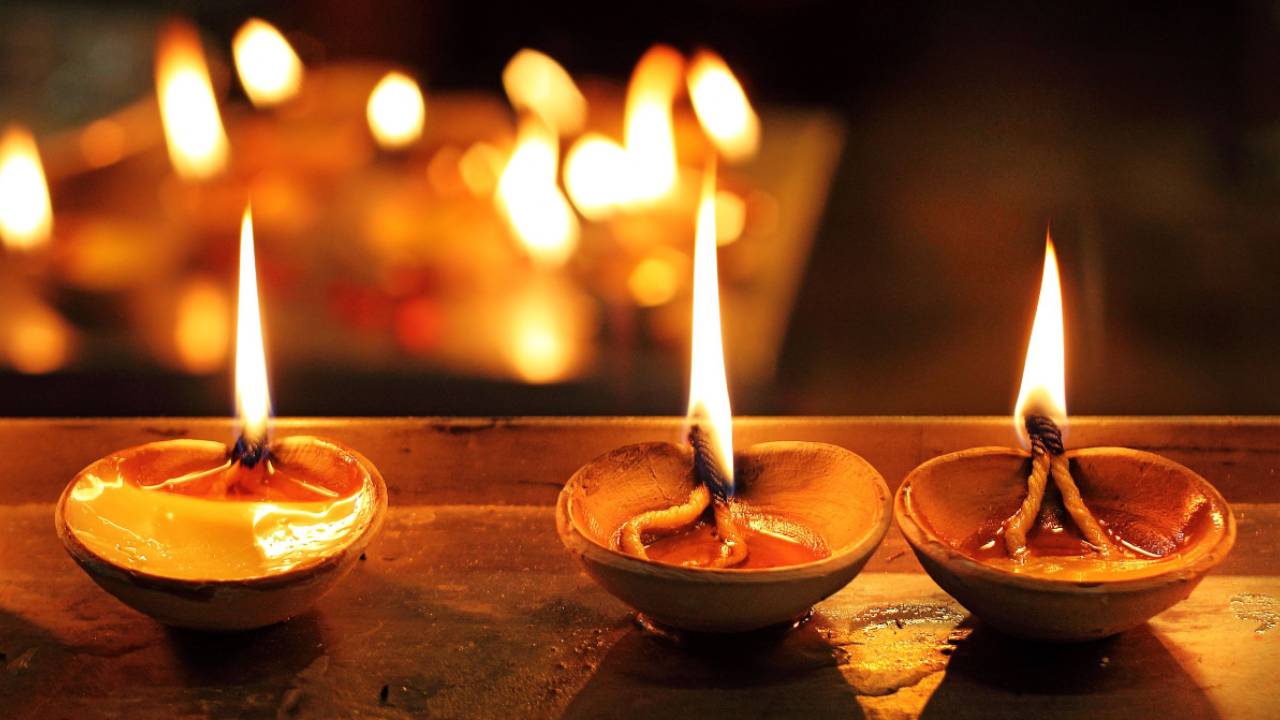LIBERATE YOUR VOICE!
Silent Mind Holy Mind

For some, Christmas is a time of fun, festivities, and family gatherings. For others, it can evoke feelings of sadness, loneliness, or frustration. The season is often accompanied by Christmas carols playing everywhere— in stores, malls, and elevators. If you love these carols, that's great; however, if you don't, it can be quite challenging. Some of the new arrangements can feel excessively busy, but the melodies themselves are timeless and beautiful.
Today, on Christmas Eve, I want to offer you something special: a music meditation featuring the well-known Christmas carol "Silent Night." This rendition includes no lyrics, only the melody played meditatively on a double-reed harmonica with a soft piano accompaniment. For our meditation practice, we will focus on maintaining a quiet mind, using the music to guide us into an even deeper silence within ourselves.
In Eastern spirituality, a silent mind invites holiness. This is one way to spend Christmas Eve—becoming quiet and still wit...
Studying With Bede Griffiths

Studying with Bede Griffiths was an amazing experience. The experience was more than just conversations; it was a transformative journey. Here's how it unfolded:
Every evening, he would give a lecture from four o'clock to five o'clock. This would typically consist of a 45-minute talk, followed by a question-and-answer session. His responses to questions were remarkable, as they revealed the underlying theology and understanding that he had accumulated over a five-year period, which really became part of us.
In the evenings, during evening prayer, the Gospel reading for the next day's Mass was shared, specifically from the New Testament. He would then provide commentary, usually focusing on a reading from the letters of St. Paul. The next morning, he would deliver a sermon on the Gospel, skillfully connecting it to the commentary from the previous evening. This process created a cohesive spiritual experience, especially considering the mental space he provided and the overall lifestyl...
Cooking With Mantras

There is a saying that the family that prays together stays together. One of the gifts in our family, just Asha and I, is her dedication to prayer and her commitment to preserving an atmosphere of sacredness in our home.
The kitchen is a space she is particularly mindful of. As a result, I believe we have cultivated something of a holy life, especially after leaving the monastery. Asha and I met in the monastery when I was a monk, and she became very close to our mentor, Beat Griffiths.
Even after our marriage, we spent about six months in the ashram as a married couple. The sensitivity of the ashramic way of life has always influenced us. However, there is something more at play.
There is the essence of India itself and the Hindu tradition, which embodies a prevailing sense of the sacred. Bede Griffiths defined the spirituality of India as inseparable from its culture, using the exquisite term "a sense of the sacred."
Griffiths noted that when he first arrived in Mumbai, formerly ...
Concurrent Dimensions In Singing

In recent Yoga of Sound trainings, we've discussed the three dimensions of our Singing As Meditation process: the aesthetic, the therapeutic and the spiritual. If we focus excessively on the technical aspects, we risk compromising the aesthetic component. It may not sound beautiful if it’s too technical. Conversely, if you aim for aesthetics without the necessary technique, the beauty won’t be embodied properly, leading to a loss of aesthetic quality. It might be conceptually great, but poor technique means it won’t be beautiful; it will just be technically sound without any beauty.
Now, what about the third component—spiritual depth and connection? As we look at aesthetics and technique, it’s crucial to realize that even if something sounds beautiful and technically correct, it can still lack spiritual depth. Many people mistakenly believe that technical and musical excellence automatically equates to spirituality. I’ve come to understand that this is not the case after 40 years of e...
Did The Healthcare System Fail Asha?

Over the past four months, I have watched my beloved wife, Asha, face one of the toughest challenges of her life. As a health coach, she has focused on her well-being, making mindful choices about food, exercise, mental, and spiritual health. This disciplined and passionate approach is part of who she is year-round, but these months felt like a sprint toward a long-awaited finish line.
If you are a woman reading this, you will find many insightful takeaways in the blog post in which Asha shares many valuable aspects and decisions related to her recent engagement with our healthcare system.
I encourage you to read this account also if you are a man, as understanding how to approach health care in certain circumstances will not only help you but also equip you to care for the loved ones in your life.
Asha and I both feel as though we have been given a new lease on life, which we intend to appreciate and share with others to help improve health and well-being in various areas.
Summa...
Chanting To Calm The Monday Effect

Recent evidence suggests that heart attacks are more common on Mondays; however, this effect is modest, as most heart attacks still occur on other days. More concerning is the fact that today, women—over 60 million Americans—are more susceptible to cardiovascular diseases than men.
What I want to offer you today is a form of prayer that can help you ease into your Monday. This type of prayer involves chanting, which is a traditional practice. Since chanting has a proven track record of improving circulation and can help manage blood pressure and stress, it serves as a valuable tool for wellness and self-care.
In Hindu astrology, Monday is known as Soma Vāra, which means "moon day," as it is associated with the moon. Lord Shiva is also linked to the moon; one of his epithets is Chandra Śekhara, meaning "the one who wears the moon in his hair." Meditating on Shiva on Mondays can promote calmness, emotional balance, and personal growth.
The set of mantras chanted for you in the medita...
Healing Light Of Rama (Meditation)

This Diwali, I would like to offer you something special: an audio-visual meditation that reflects on the healing energy associated with Lord Rama. He is not only a central figure in the festival of Diwali but also one of the most revered deities in Hinduism.
In the blog below the meditation, I share the significance of Diwali and its connection to Rama, who has greatly influenced my life and consciousness.
Asha and I were born and raised in our native state of Tamil Nadu, India. Diwali was one of the most special times of the year for us. My childhood was spent living in an orthodox Hindu neighborhood and attending a Hindu school and where I knew only Hindu friends. Like many Hindu children, I grew up reading Amar Chitra Katha, a comic book series that conveys Hindu spirituality, culture, and history through art and text.
In the tradition of the Ramayana—one of Hinduism's two main epics known as ithihasa—Diwali commemorates the return of Lord Rama to his kingdom of Ayodhya, alon...
Raising The Vibration: Mantras And The Vedic Experience

In this comprehensive blog, you will gain insights into how the Vedic experience, primarily accessed through the vibrations of mantras, conveys a unique quality of consciousness. This quality can be influenced by both the ego and the chanting skills we develop. I will use my own experiences as a personal example to illustrate this concept. The goal is to elevate our practices within our Yogic Mystery School, which is dedicated to mantra practice and other teachings.
Mantras And The Vedic Experience
We approach the Vedic experience primarily through mantras. The Vedas themselves are composed of mantras; they are a body of sacred sound, akin to a reservoir of sound.
However, this is not ordinary sound. It represents a form of sacred speech, with vibrations that embody a specific type of consciousness. The Vedas convey a quality of consciousness that also offers a perspective.
To engage with this process, we need to find our way into it. While Vedic chanting is meant to communicate th...
Starting Our Shiva Sadhana

At the core of our approach—my own included—lies the balance between Shiva and Shakti. Even if you haven't engaged in many practices yet, I will provide valuable insights during our Tantric Shiva Retreat. The focus is not on accumulating more knowledge; rather, it is about delving deeply into the mysteries of Shiva with what we already know.
Some of our students are familiar with certain practices, such as initiation mantras. To enhance our experience, we can revisit and refresh our understanding of the mudras associated with these mantras, which may have been forgotten. These initiation mantras will serve as the foundation for our development. Shiva Upasana that we can deepen over time.
In many ways, our retreat is intended to serve as a launch point for a new approach to spirituality, particularly the mystery of Shiva. That's why I mentioned to everyone that, even if you haven't prepared, it's still important to be present. However, the truth is that even those who have prepared ma...
The Benefits Of Singing As Meditation

Singing as Meditation is one of the new tracks in our Yogic Mystery School annual theme, which is Fit Body Mindful Soul. Singing has benefits that are physiological, psychological, and spiritual.
Apart from the obvious spiritual benefits of singing Hindu devotional music, which results in elevated states of consciousness, our practice is exploring the connection between musical sound and our overall health, encompassing both physical and psychological aspects. I believe there’s a significant correlation between the two.
The significant impact of music on health and psychology is not only documented in thousands of years of the Yoga of Sound's development, but also from the contemporary work of Oliver Sacks and the earlier contributions of Don Campbell and Alfred E. Tomatis.
The following insights were shared impromptu when students started to arrive for the session and shared what they were planning to do during the session. You are welcome to listen to actual exchanges in the video...


